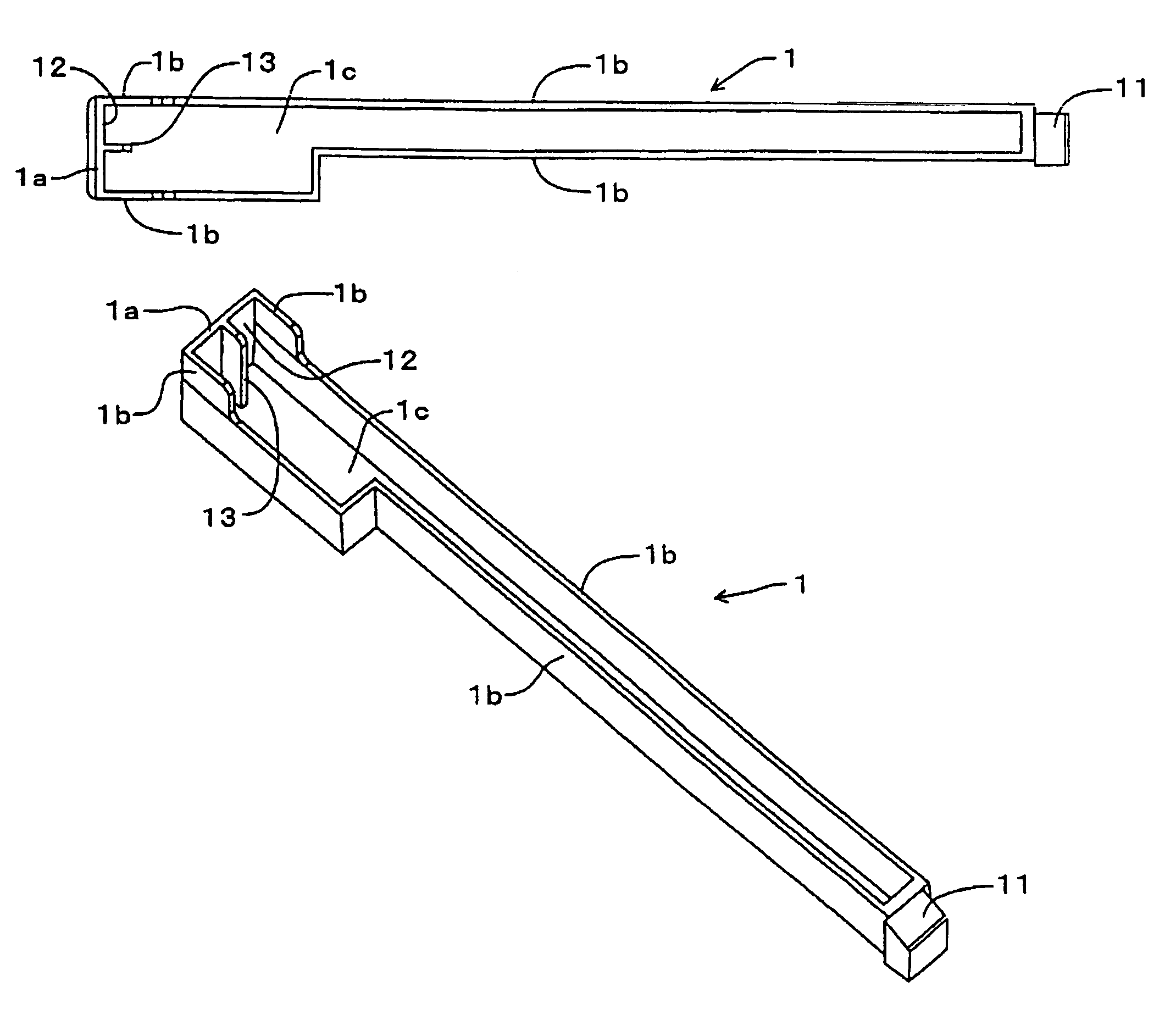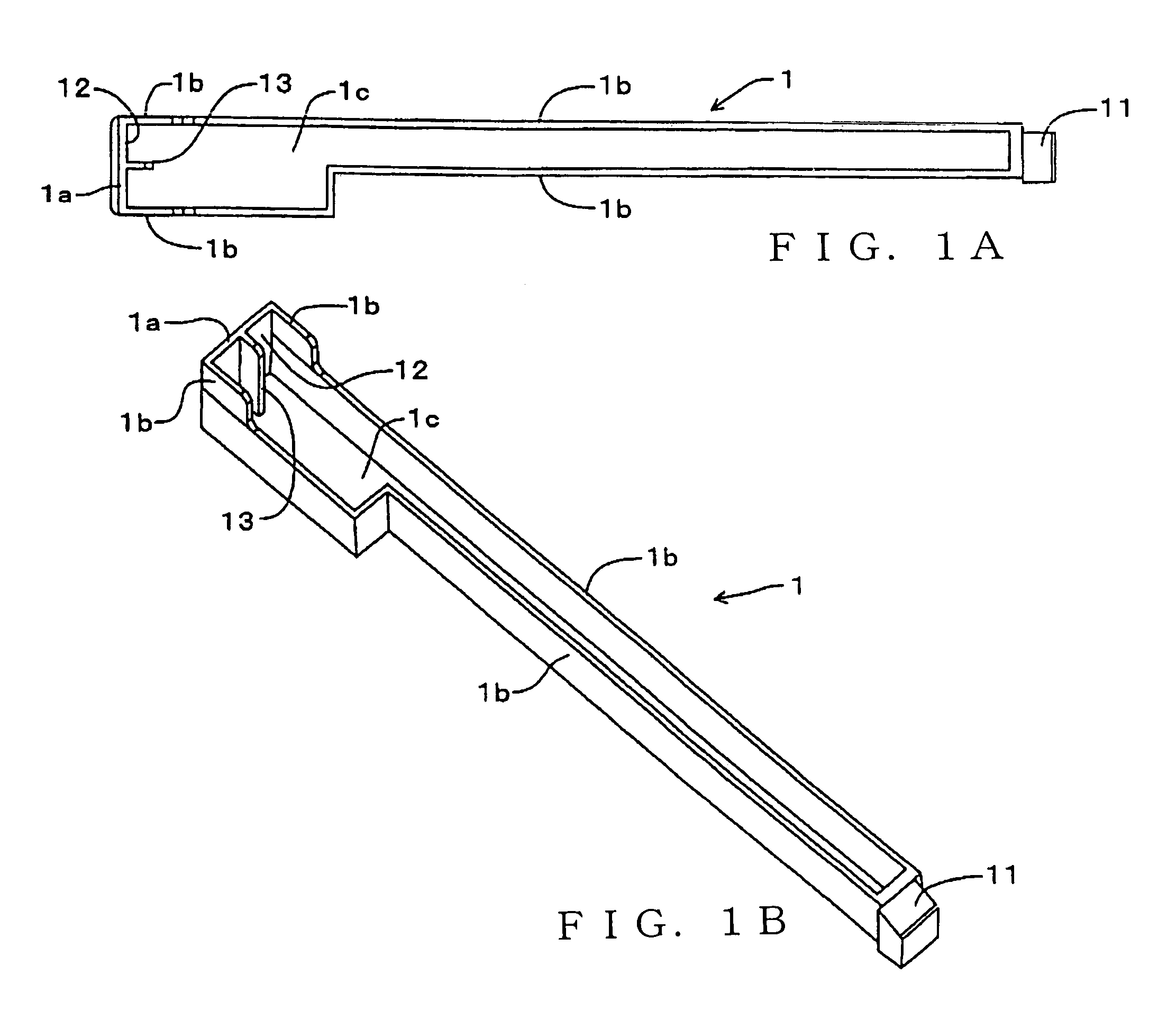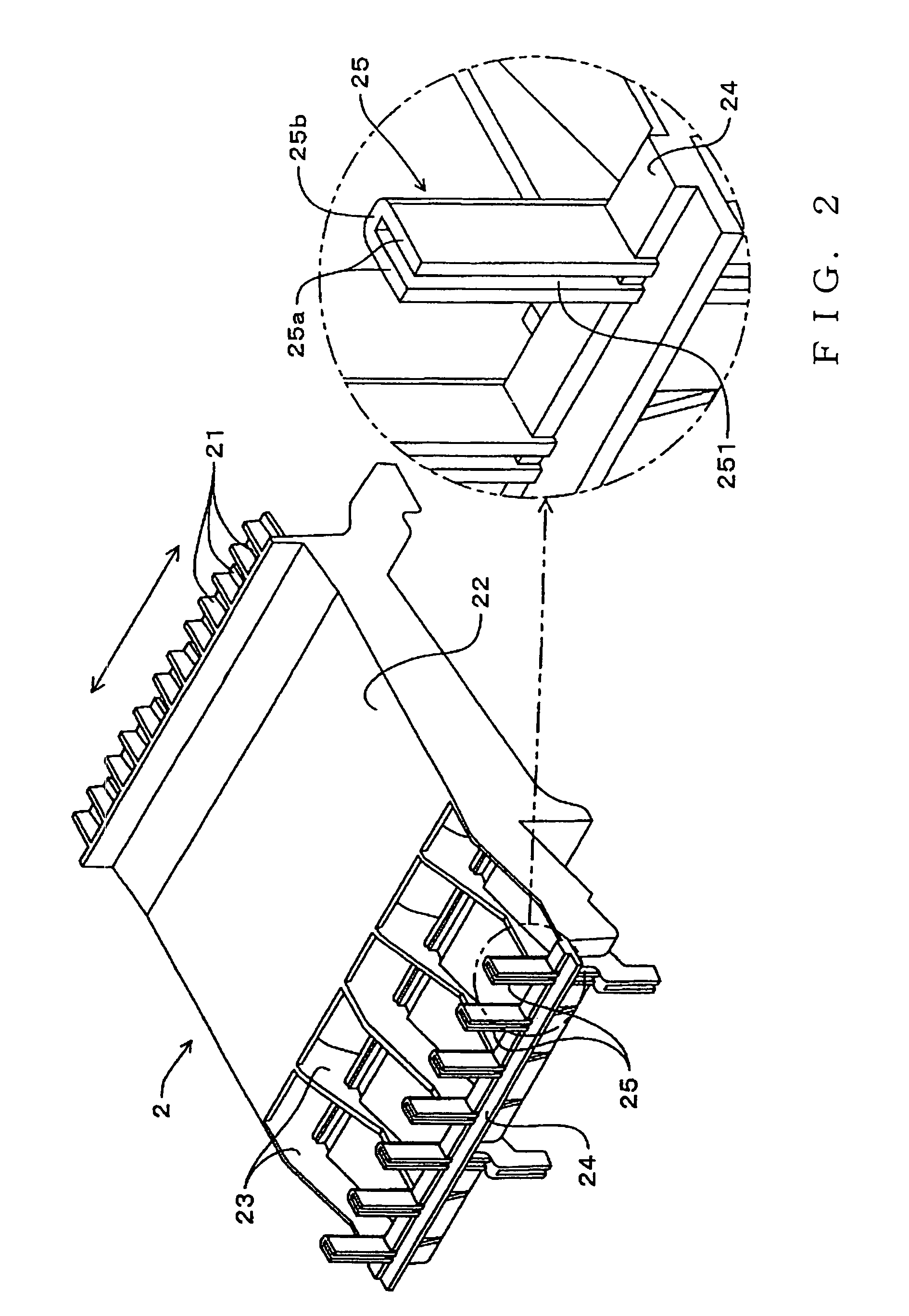Key guide structure in keyboard apparatus
a technology of guiding structure and keys, applied in the direction of instruments, stringed musical instruments, measurement devices, etc., can solve the problems of dimensional stability, positional accuracy and appearance, noise sound produced, and keys cannot be molded accurately into original-designed dimensions, so as to prevent the production of unwanted noise sound, maintain design accuracy, and minimize the variation of gaps between adjoining keys
- Summary
- Abstract
- Description
- Claims
- Application Information
AI Technical Summary
Benefits of technology
Problems solved by technology
Method used
Image
Examples
Embodiment Construction
[0025]FIG. 1A is a bottom view of a white key in a keyboard apparatus to which is applied a key guide structure in accordance with an embodiment of the present invention, arid FIG. 1B is a bottom perspective view of the key. FIG. 2 is a top perspective view showing principal sections of a key frame in the keyboard apparatus. FIG. 3A is a side sectional view showing a key in a released position, and FIG. 3B is a side sectional view showing a key in a depressed position. In FIGS. 3A and 3B, a left side is where a human player is located at the time of a performance (hereinafter “player side”), and a direction perpendicular to the sheet of FIG. 3 is a direction in which a plurality of keys are arranged. Throughout this specification, “upper”, “lower”, “left” and “right” represent directions as viewed from the player side, and “front” represents a direction toward the player side while “rear” represents a direction away from the player side, i.e. toward the back of the keyboard apparatu...
PUM
 Login to View More
Login to View More Abstract
Description
Claims
Application Information
 Login to View More
Login to View More - R&D
- Intellectual Property
- Life Sciences
- Materials
- Tech Scout
- Unparalleled Data Quality
- Higher Quality Content
- 60% Fewer Hallucinations
Browse by: Latest US Patents, China's latest patents, Technical Efficacy Thesaurus, Application Domain, Technology Topic, Popular Technical Reports.
© 2025 PatSnap. All rights reserved.Legal|Privacy policy|Modern Slavery Act Transparency Statement|Sitemap|About US| Contact US: help@patsnap.com



